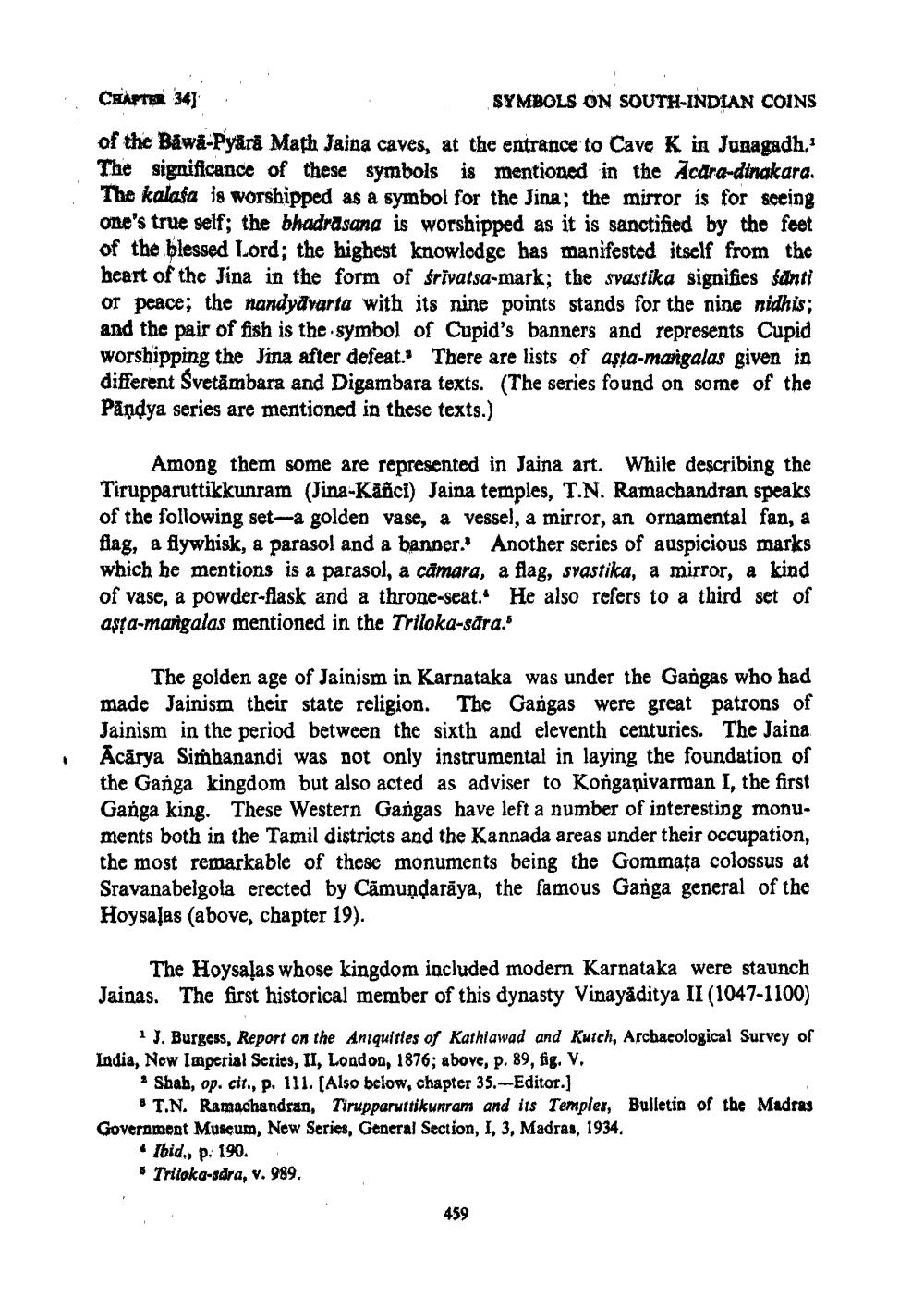________________
•
CHAPTER 34]
SYMBOLS ON SOUTH-INDIAN COINS
of the Bawa-Pуärä Math Jaina caves, at the entrance to Cave K in Junagadh.1 The significance of these symbols is mentioned in the Acara-dinakara The kalafa is worshipped as a symbol for the Jina; the mirror is for seeing one's true self; the bhadrasana is worshipped as it is sanctified by the feet of the blessed Lord; the highest knowledge has manifested itself from the heart of the Jina in the form of frivatsa-mark; the svastika signifies anti or peace; the nandyavarta with its nine points stands for the nine nidhis; and the pair of fish is the symbol of Cupid's banners and represents Cupid worshipping the Jina after defeat. There are lists of asta-mangalas given in different Svetämbara and Digambara texts. (The series found on some of the Pandya series are mentioned in these texts.)
Among them some are represented in Jaina art. While describing the Tirupparuttikkunram (Jina-Käñcl) Jaina temples, T.N. Ramachandran speaks of the following set-a golden vase, a vessel, a mirror, an ornamental fan, a flag, a flywhisk, a parasol and a banner. Another series of auspicious marks which he mentions is a parasol, a camara, a flag, svastika, a mirror, a kind of vase, a powder-flask and a throne-seat. He also refers to a third set of asta-mangalas mentioned in the Triloka-sära."
The golden age of Jainism in Karnataka was under the Gangas who had made Jainism their state religion. The Gangas were great patrons of Jainism in the period between the sixth and eleventh centuries. The Jaina Acarya Simhanandi was not only instrumental in laying the foundation of the Ganga kingdom but also acted as adviser to Kongapivarman I, the first Ganga king. These Western Gangas have left a number of interesting monuments both in the Tamil districts and the Kannada areas under their occupation, the most remarkable of these monuments being the Gommata colossus at Sravanabelgola erected by Cămundaraya, the famous Ganga general of the Hoysalas (above, chapter 19).
The Hoysalas whose kingdom included modern Karnataka were staunch Jainas. The first historical member of this dynasty Vinayaditya II (1047-1100)
1 J. Burgess, Report on the Antquities of Kathiawad and Kutch, Archaeological Survey of India, New Imperial Series, II, London, 1876; above, p. 89, fig. V.
Shah, op. cit., p. 111. [Also below, chapter 35.-Editor.]
T.N. Ramachandran, Tirupparuttikunram and its Temples, Bulletin of the Madras Government Museum, New Series, General Section, I, 3, Madras, 1934.
Ibid., p. 190.
* Triloka-sára, v. 989.
459




